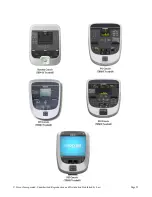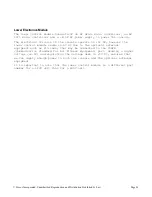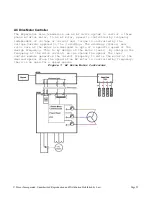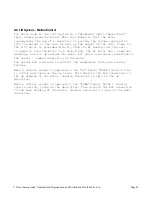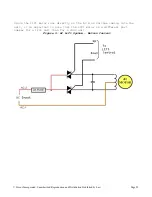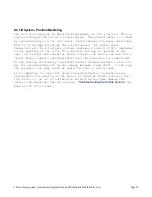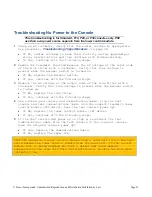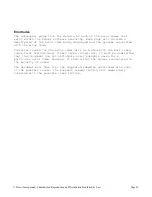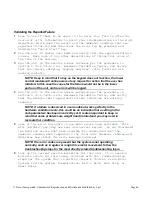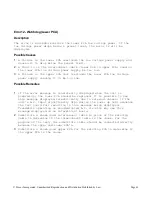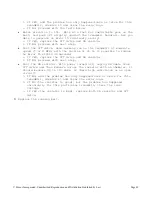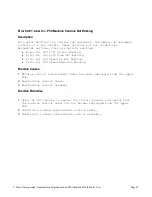
© Precor Incorporated, Unauthorized Reproduction and Distribution Prohibited by Law
Page 32
If the unit trips the wall breaker:
1
Check the voltage coming from the wall. If it is approximately to 0V,
the wall breaker has likely tripped.
2
Inspect the line cord, If damaged, replace the line cord. If the line
cord is not damaged continue with the following steps.
3
Verify if two or more treadmills on the same wall breaker. This will
be especially evident if two or more treadmills shut down at the same
time. To verify if multiple treadmills are sharing the same wall
breaker, manually turned off the wall breaker. If more than one
treadmill loses power, the treadmills are on the same breaker.
If YES, advise the customer to have their facility wiring upgraded
per Precor specifications.
If NO, continue with the following steps.
4
Verify the wall outlets
do not
share neutral wiring and that each wall
outlet is on a individual branch circuit. A individual branch circuit
will have its own load line, neutral line and ground line. To verify
that the treadmill is not on a individual branch circuit use an AC
voltmeter measure from the hot contact of one AC receptacle to the
neutral contact of another AC receptacle. If AC line voltage is
present then the treadmills are sharing neutral lines.
If YES, advise customer to have their facility wiring upgraded per
Precor specifications, and then continue to step 5.
If NO, Continue to step 6
5
Measure the AC input voltage with the treadmill unloaded (running belt
moving, with no one walking on the running belt) and then again while
loaded (someone walking/running on the belt). The difference between
the two states should be no more than about 6 volts RMS, and ideally
less.
If the voltage variance is more than 6 volts RMS, the distance the
branch circuit wire are runs maybe very long or may have used
smaller diameter wire. Recommend to the club that they should
consult with an electrician if this is suspected.
If NO, Continue to step 6.
6
Overloading is the most frequent cause of treadmill shutting down.
Overloading is most often caused by excess deck/belt friction, but can
be made worse by line voltage conditions. This condition happens more
often with heavier runners, but never walkers. In high user clubs (10
hours or more of use per day), the decks/belts will wear out much
faster than at other locations, sometimes in months rather than years.
It is often accompanied by error codes 27, 28, or 29. Follow the steps
for these errors as per procedure,
Troubleshooting the Drive Motor System
Summary of Contents for TRM10/GEN06
Page 2: ......
Page 23: ...Precor Incorporated Unauthorized Reproduction and Distribution Prohibited by Law Page 21...
Page 93: ...Precor Incorporated Unauthorized Reproduction and Distribution Prohibited by Law Page 91...
Page 140: ...Precor Incorporated Unauthorized Reproduction and Distribution Prohibited by Law Page 138...
Page 141: ...Precor Incorporated Unauthorized Reproduction and Distribution Prohibited by Law Page 139...
Page 142: ...Precor Incorporated Unauthorized Reproduction and Distribution Prohibited by Law Page 140...
Page 143: ...Precor Incorporated Unauthorized Reproduction and Distribution Prohibited by Law Page 141...




